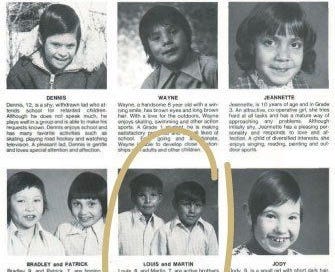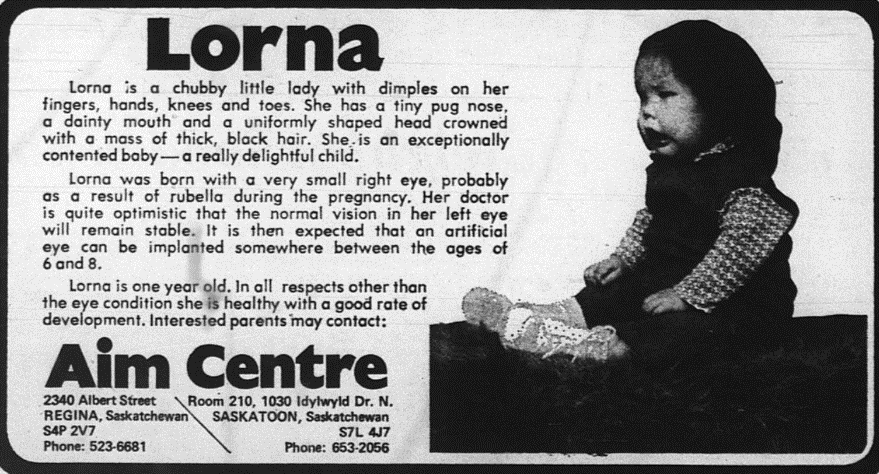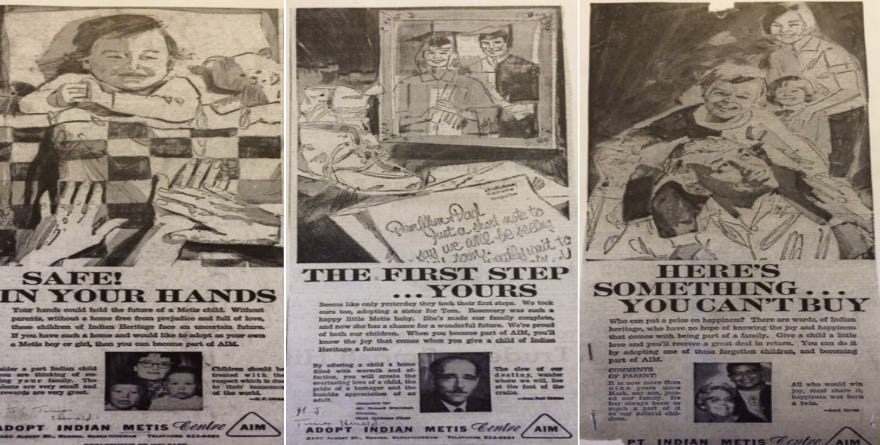The “Sixties Scoop”
Between 1951 and 1991, First Nation and Inuit children were taken into care and placed with Non-Indigenous Parents
Between 1951 and 1991, First Nation and Inuit children were taken into care and placed with non-Indigenous parents where they were not raised in accordance with their cultural traditions nor taught their traditional languages. In many cases they didn’t even know they were Indigenous. This dark chapter in Canada’s history is commonly referred to as the Sixties Scoop. Despite its name referencing the 1960s, the Sixties Scoop began in the mid-to-late 1950s and persisted into the 1980s. With an estimated 20,000 to 100,000 victims. Due to insufficient record keeping we may never know the actual numbers.
What we do know for sure is that during this time programs like the Adopt Indian Metis (AIM) program, in which Indigenous children removed from traditional homes were presented like products or pets with pictures in newspapers and magazines throughout North America. These children, in many cases were to grow up with little to know knowledge of their indigenous roots and were often removed from siblings in the process. These children would never be told of their culture or have access to their Indian Status rights.
A 1975 Government of Saskatchewan adoption services poster.
Regina Leader Post late 60’s early 70’s (exact date unknown)
Regina Leader Post late 60’s early 70’s (exact date unknown)
Early Newspaper Ads for Adopt Indian and Métis, 1967 From Department of Social Services Collection, R-935, File I-49, Adopt Indian and Métis Program, SAB.
A.I.M. was launched by Saskatchewan Social Services in 1967 as a solution to the growing number of Indigenous children in government care. When Cyril Macdonald, Saskatchewan's minister of welfare, went on television that year to announce the program, he said
“The number of Indigenous children in care had been growing by 180 per year.”
"While we have had reasonable success in placing white children for adoption, we have had great difficulty in placing Indian and Métis children."
He continues to state with optimism that the (AIM) program would “reduce the possibility of prejudice" that Indigenous children were facing, as well the cyclical nature of the indigenous kids and foster care homes. Because "After all, Indian and Métis children have the same potential as white. The only difference is the colour of their skin."
Saskatchewan Minister of Welfare goes on TV in 1967 to announce adoption program for Indigenous children
While the government policies that led to the Sixties Scoop were officially discontinued in the mid-1980s, a closer look at the child welfare documents and the Canadian Census data seems to indicate that in many ways the problem continues to persist to this day.
In December of 2018, The National Settlement between the Government of Canada and plaintiffs representing the group of Sixties Scoop Survivors who constitute “Eligible Class Members” was approved and a 750 million dollar payout was announced. The agreement paves the way for each claimant to be eligible for between 25 and 50 thousand dollars, up to a maximum of 750 million. At first glance this settlement may seem like a win, until we consider that “Eligible Class Member” does not include Metis or non-status Indians. Considering what we’ve learned about the amount of Indigenous kids that have lost completely their access to family history, bloodlines, and status as a direct result of these policies. It’s is also worth mentioning that although special attention was paid to the fact the 75 million dollars in “legal fees” were awarded separate from the settlement amount of $750 million, the four law firms that represented the survivors (Wilson Christen LLP, Klein Lawyers, Koskie Minsky and the Merchant Law Group) stand to make 18.75 million PER firm, or 375 times the $50,000 maximum amount entertained per survivor. Although the fees were originally challenged, being called "excessive and unreasonable." The decision was overturned in 2021 and the fees will be paid by the federal government.
Darren Grimes











How would you find out if you or a loved one were one of those kids?
I'm curious if a similar program existed in US in the 20th century? I know of the 19th century program and that the US eugenics program sterilized a higher percentage of indigenous that any other.